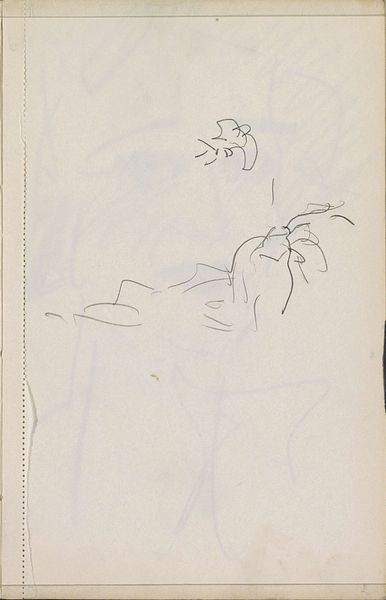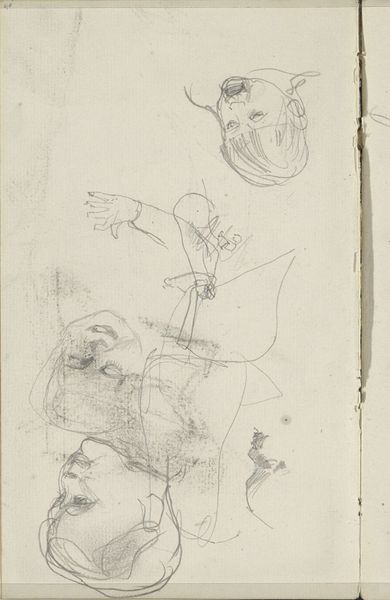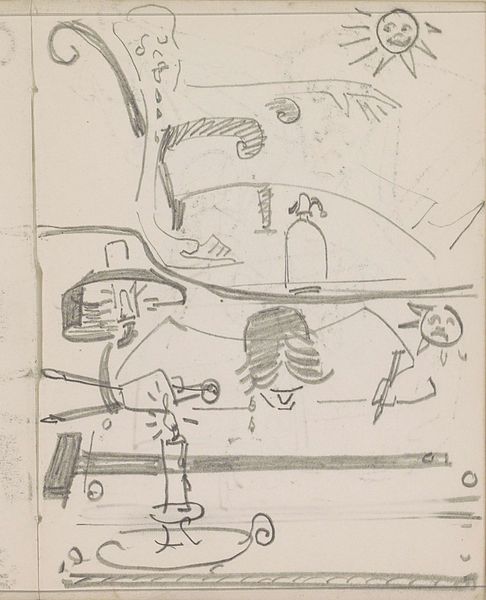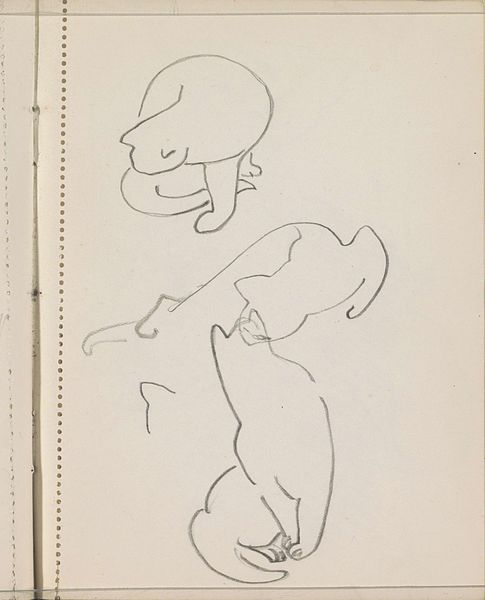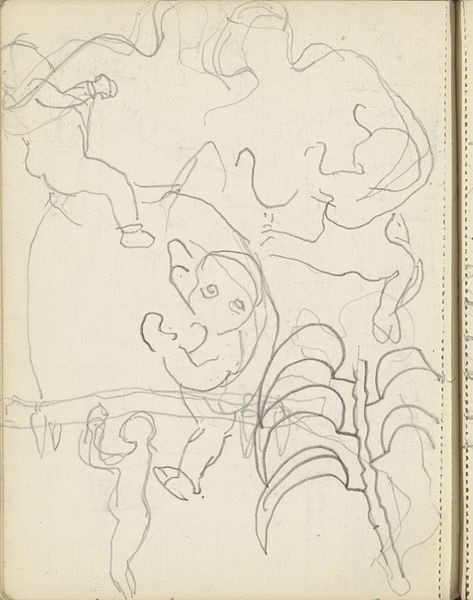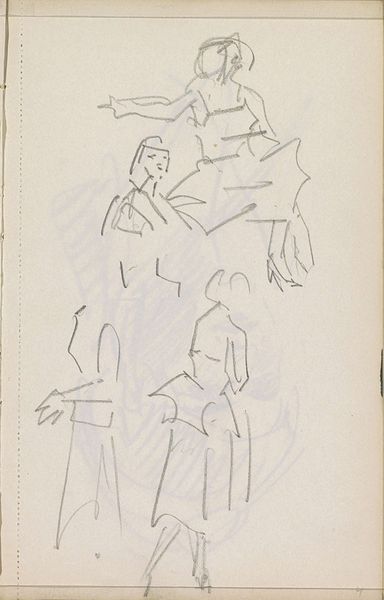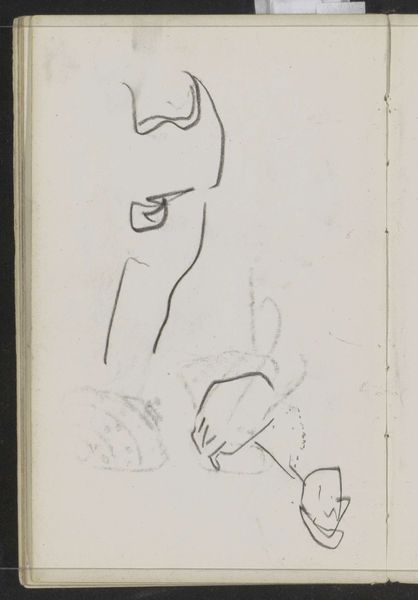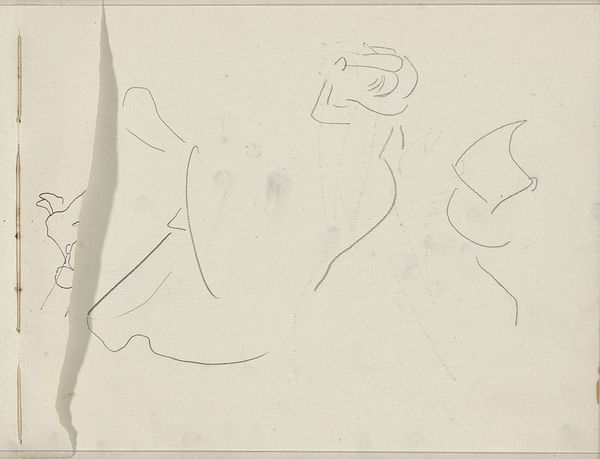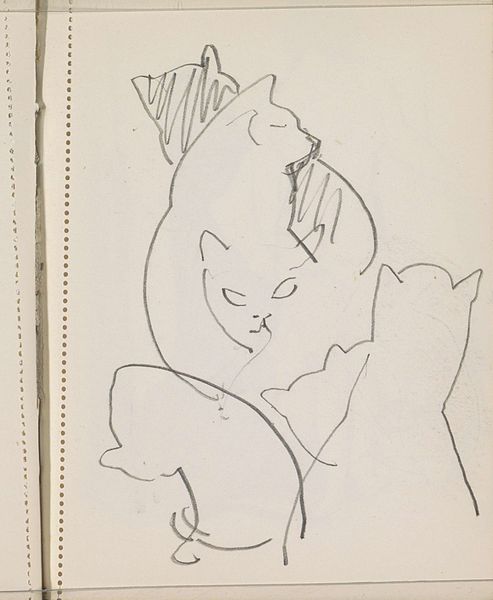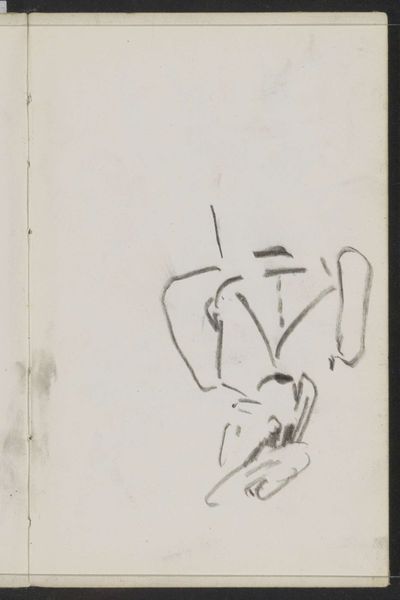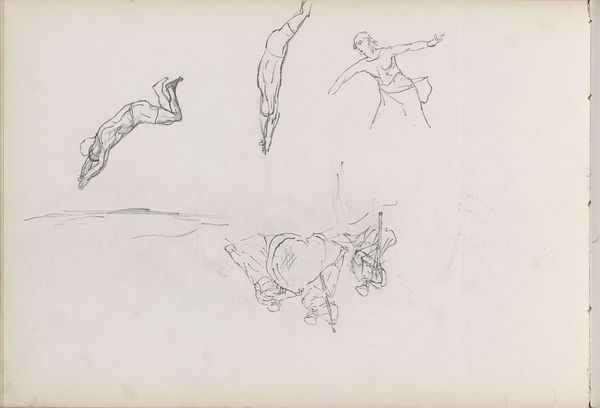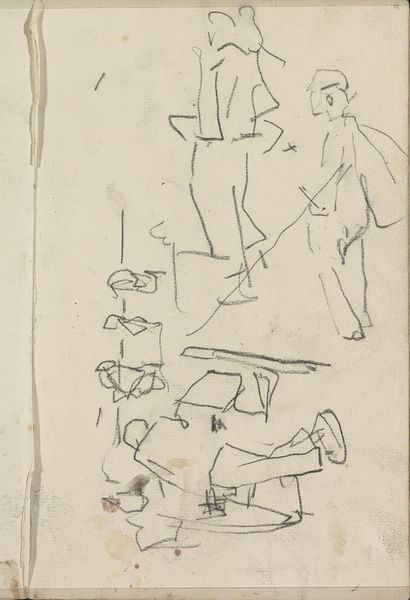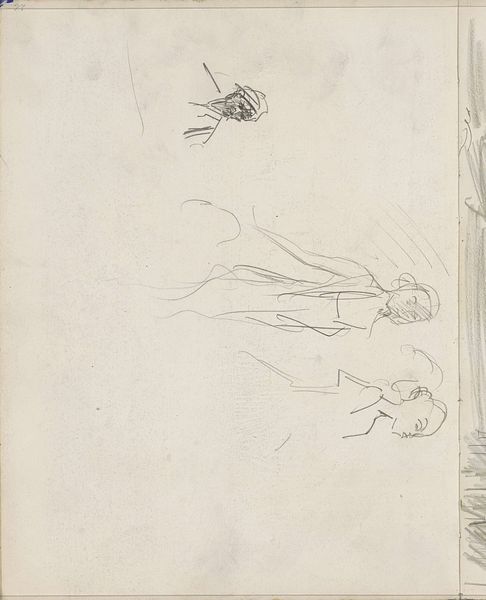
drawing, paper, pencil
#
portrait
#
drawing
#
imaginative character sketch
#
light pencil work
#
quirky sketch
#
figuration
#
paper
#
personal sketchbook
#
idea generation sketch
#
sketchwork
#
ink drawing experimentation
#
pencil
#
sketchbook drawing
#
storyboard and sketchbook work
#
sketchbook art
Copyright: Rijks Museum: Open Domain
Curator: I am struck by the energy here. It’s a page of experiments in capturing life and form. Editor: Indeed. Before us is “Figuurstudies”, or "Figure Studies," a drawing created around 1895 by Carel Adolph Lion Cachet. It resides here at the Rijksmuseum. Curator: The immediate feeling is of ephemeral thoughts, sketches as if catching a fleeting moment, or even a dream fragment. Are these literal figures, or types representing something else? The one with the dark, smudged charcoal has a powerful resonance of mystery. Editor: The lack of completion enhances that mystery, doesn’t it? Consider how Cachet employs line weight. Some contours are firm, almost aggressive, establishing edges, while others fade, hinting at the insubstantiality of form. The tension arises in these differences. Curator: Precisely. That play between solidity and dissolution hints at the transient nature of identity, or the struggle to define it. See how certain images seem more complete. There is almost a push and pull between presence and absence on the page. They aren’t studies for anything literal, they feel archetypal. Editor: It reads more as an internal landscape than observed reality, certainly. In terms of its raw form, consider the material properties. The tooth of the paper offers resistance to the pencil, which leads to the textured surface. Light becomes sculptural, almost, rendering this page incredibly complex despite the ostensible simplicity. Curator: I keep returning to that top figure. A walker striding, with assured movement but with something concealing the face... I can’t help but connect that symbol with journeys and initiations. Is that a memory he carries? Is he being watched? I am sure a contemporary viewer would associate this cloaked figure with certain societal anxieties too. Editor: Fascinating, especially since Cachet did not label these sketches. This allows the viewer latitude to invest our meaning into what might simply have been a moment of artist idea generation, as the hand rapidly translated what the eye saw into lines on paper. Curator: Yes, the sketchbook quality reinforces the personal and universal feeling of inner reflection. These sketches act as an artifact that we too can place our own symbols in. Editor: Ultimately, both Cachet’s method and this collection’s arrangement allows us to see, think, and feel more acutely. It truly reflects the unique quality of sketch art.
Comments
No comments
Be the first to comment and join the conversation on the ultimate creative platform.
